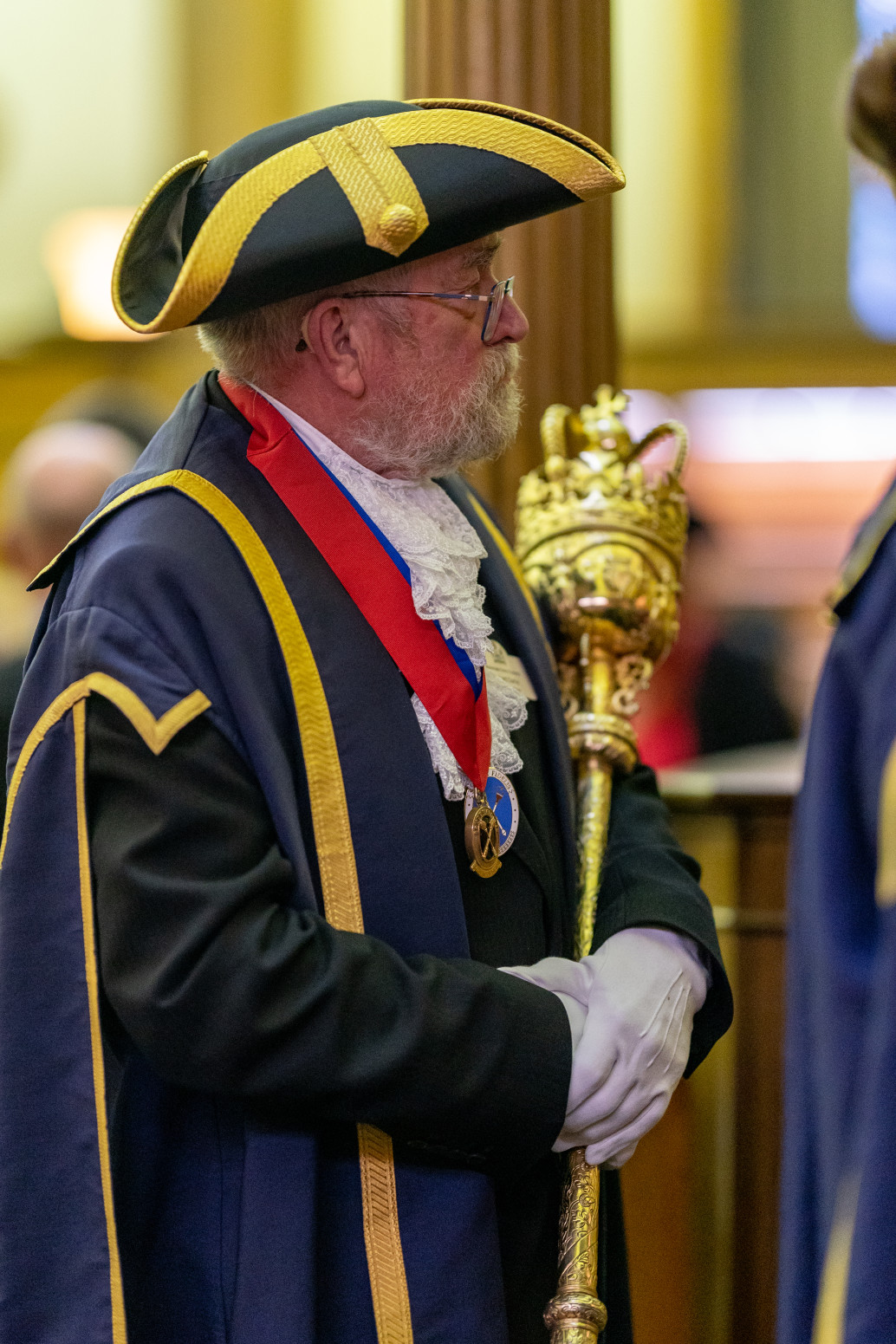The Hertford Mace

The Charter of Queen Elizabeth I in 1589 granted the Borough the right to appoint a Sergeant-at-Mace. The Mace is silver gilt, 38" in length, and weighs 930z. It is decorated with oak leaves, the rose, thistle and harp. Motto of mace -The Freestone of England by God's blessing, restored 1660.
The Town Mace is the symbol of Royal Authority in Hertford, as the Sword is the symbol of Royal Justice but, whereas the Sword is well-documented as regards date of making, the Mace is older and less well-documented so that some of what follows is based on reasonable conjecture.
Hertford's early beginnings were as a Saxon burgh (some evidence of a mint of the time of Alfred the Great has been found) and with the development of town life a 'burgh bailiff' emerged. A bailiff was an individual who was chosen by some sort of election to be a leader and spokesman for the burgh and probably was able to act as an arbitrator in local disputes. Under the Tudors the bailiff's position was formalised and, as some burghs became "boroughs", the bailiff became the "Mayor". By this time the bailiff had been elected annually with all freemen having a vote (in Hertford's case this meant all adult males living within the boundary). It had evidently become customary for the bailiff to receive a robe or gown by public subscription on taking office. When Henry VIII created Hertford a Borough, a Council would have been in existence to aid the Mayor, and the Mayor would have received a staff of office from the Crown (there is documentary evidence to support this). That part of the shaft of the present Mace, furthest from the Crown, is of a slightly different design from the counterpart. It is possible that the old staff of office was incorporated into the Mace when this symbol of authority came into use.
Hertford certainly had a Mace at the time of the Civil War. How it was treated in those revolutionary times is not known but, with the Restoration, those Boroughs which had been Parliamentary and which had a Mace, had a Crown imposed upon their Maces at Royal Command. Hertford was a parliamentary town and had a Crown imposed upon its Mace. However, there is an oddity in the Royal Cypher on the Hertford Mace. The cypher is 'CR' with a rose interposed, not 'CIIR' as would be expected if Charles II had imposed a Head and Crown on an extant shaft.
So the Hertford Mace is at least pre-Civil War and might contain an element, which relates directly to the time when the ancient office of bailiff was transformed into Charter Mayor in the sixteenth century.
In 1980 the Mace was repaired and re-gilded, the necessary monies being provided by businesses and companies operating within the town.
